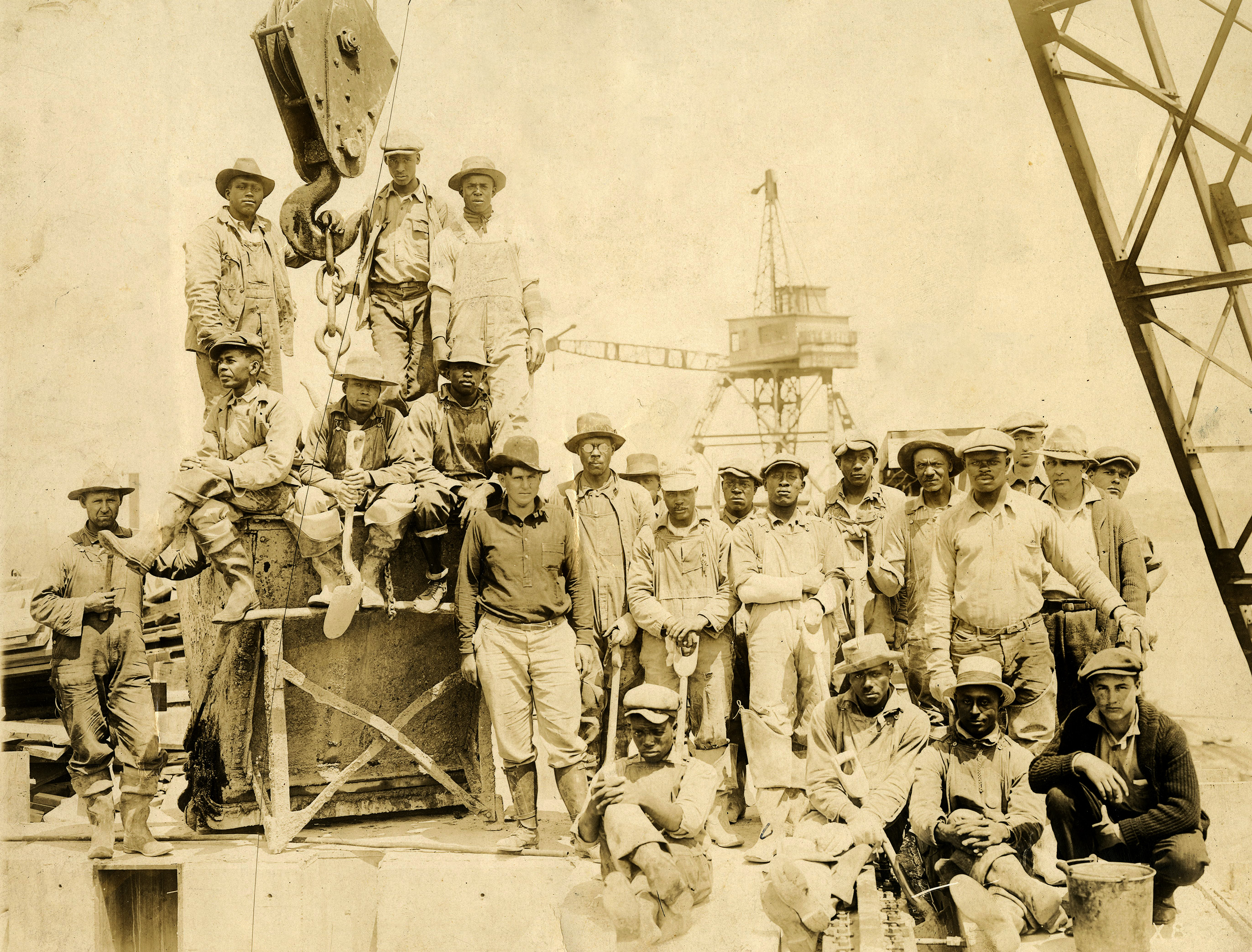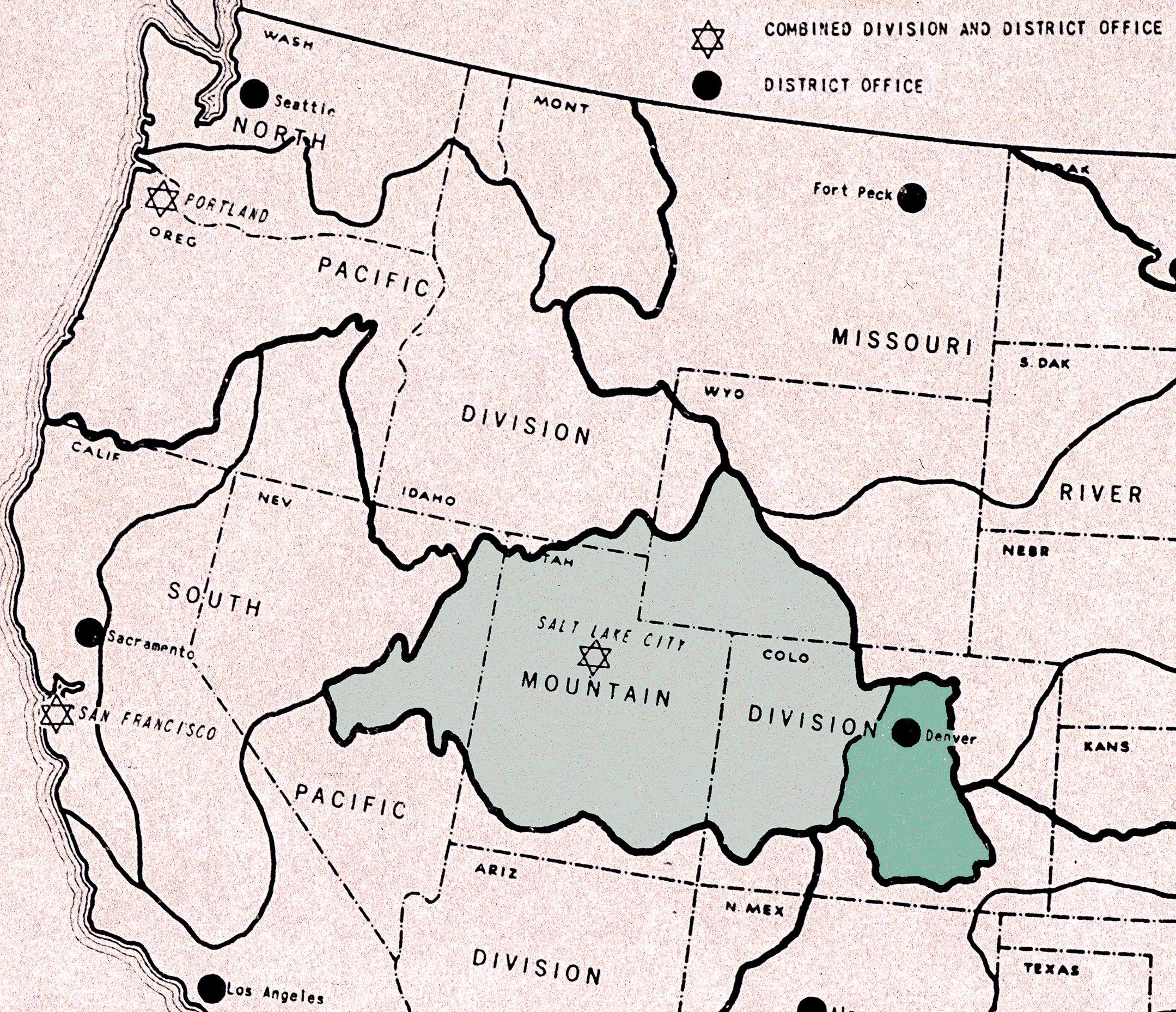Although the organization of U.S. Army Corps of Engineers divisions and districts has been relatively stable over the last few decades, the agency has always been adaptable and has occasionally opened, closed, and adjusted its field offices for a variety of reasons. Division realignments have led to district reorganizations, as have Congressional actions, changing workloads, and disaster response efforts. USACE established some districts primarily to manage one major project, closing them when that work was done—such as Fort Peck District in Montana and Garrison District in North Dakota, which built the dams of the same names, or the Susquehanna District, which coordinated the response to Hurricane Agnes. Other “temporary” project-specific districts endured, however. For instance, the office known in succession as Tucumcari, Conchas, and Caddoa District, founded to build dams in New Mexico and Colorado in the 1930s, survives as the Albuquerque District. A few bygone districts are remembered here.
|
FLORENCE DISTRICT. 4/1/1918 – late 1928
During World War I, Congress determined that the U.S. needed a domestic supply of nitrates to manufacture explosives, but to produce them required a substantial energy source. A hydroelectric dam, built by the Corps of Engineers, could supply the needed power. The president selected Muscle Shoals on the Tennessee River near Florence, Alabama, as a suitable site. So in April 1918, the Corps carved out an area of northern Alabama and southern Tennessee from its Chattanooga District and established it as the Florence District to supervise construction of what became Wilson Locks and Dam.
Although the war ended in November, the project continued apace. For the next ten years, the district supervised as many as 4,000 hired laborers at one time. Its Chief of Supply Division, Maj. Stuart Godfrey, developed ambitious new accounting methods that USACE eventually adopted across the agency. Congress shut down the project in 1921 while debating its merits, but work resumed after one year. By 1926 the generators were producing power; in 1927 the locks opened to navigation; and in 1928 the project was substantially finished. The Corps pondered closing Chattanooga District and moving it to Florence. But because the former had several studies underway that might lead to hydropower dam projects, it survived and re-absorbed Florence District instead—though not for long: Chattanooga itself merged into Nashville District in 1933.
|
|

Some of the workers who helped build Wilson Locks and Dam under the Florence Engineer District in the 1920s.
Office of History, Gilbert A. Robinson Collection
|
|
EASTPORT DISTRICT. 5/17/1935 – 11/1/1936
During the Great Depression of the 1930s, the government assigned many civil works projects to the Corps of Engineers, hoping to stimulate the stagnant economy and put people to work. While most of these projects were also beneficial in and of themselves, a few proved to be simply too expensive or too disadvantageous to pursue.
One initiative stemming from the 1935 Emergency Relief Act was a plan to use the strong tides at Passamaquoddy Bay on the Maine-New Brunswick border to generate electric power for the region. Work on the tidal power system—a series of dams, a powerhouse, a filling gate structure, and a navigation lock—appeared significant enough (estimated at $62 million) that the Corps established a new office in May of that year to manage it. Named after a town near the mouth of the bay, the Eastport District, with its initial allotment of $7 million, began to acquire land, build housing, and prepare engineering studies and designs. It completed Pleasant Point and Carlow Island Dams and part of Treat-Dudley Dam and some work on the gate structures and powerhouse.
Very soon thereafter, Congress decided that the ambitious venture made little economic sense and declined to fund it. With the project effectively scuttled, on November 1, 1936, the Corps inactivated Eastport District, transferred its remaining activity to Boston District, and handed over the facilities to other New Deal agencies.
|
|

Part of the Treat-Dudley Dam, looking northeast
from Dudley Island at the beginning of the curve
to the abutment, June 23, 1936.
Office of History, Samuel Sturgis Collection
|
|
DENVER DISTRICT. 5/1/1942 – 6/30/1950
Denver District opened in early 1942 as part of the new Mountain Division (alongside Salt Lake City District), but leadership soon reassigned it to the Missouri River Division. Although there are few navigable rivers in the Mountain West, the district started with a focus on civil works. Its principal project was a flood control system for Cherry Creek, a stream that could flood within Denver city limits. Although Denver District built Cherry Creek Dam and Reservoir, officials postponed other proposed components.
When Army Engineers began construction for World War II in earnest, Omaha District transferred some of its military work to Denver. The young district constructed the Denver Ordnance Plant and a prisoner-of-war camp at Douglas, Wyoming. It built army training facilities (one at Camp Hale for instruction in mountain warfare) and managed other construction at hospitals and airfields in Colorado and airports in Wyoming.
In 1949 the district participated in “Operation Snowbound” to help residents and livestock following devastating snowstorms in the region. The district’s experts, familiar with local contractors, procured, paid for, and deployed civilian machinery to clear roads and railways.
By the end of the 1940s, major wartime construction was at an end. The district’s primary civil works project was nearly complete. Years of low rainfall had led officials to defer other flood control projects contemplated for the Denver region. And thus, with no other large water resources projects on the horizon, in mid-1950 USACE inactivated the Denver District and returned its responsibilities to Omaha.
|
|

A contemporary view of Cherry Creek Dam and Reservoir
southeast of Denver, Colorado.
Omaha District
|
 |
|
A detail from a 1942 map of Army Engineer field offices and their boundaries. The Denver District and its short-lived neighbor, Salt Lake City District (1941-43), comprised the even shorter-lived Mountain Division (1942), with headquarters also at Salt Lake City. Fort Peck District (1937-56) is to the north.
Office of History, Research Collection
|
***
November 2020. No. 140.